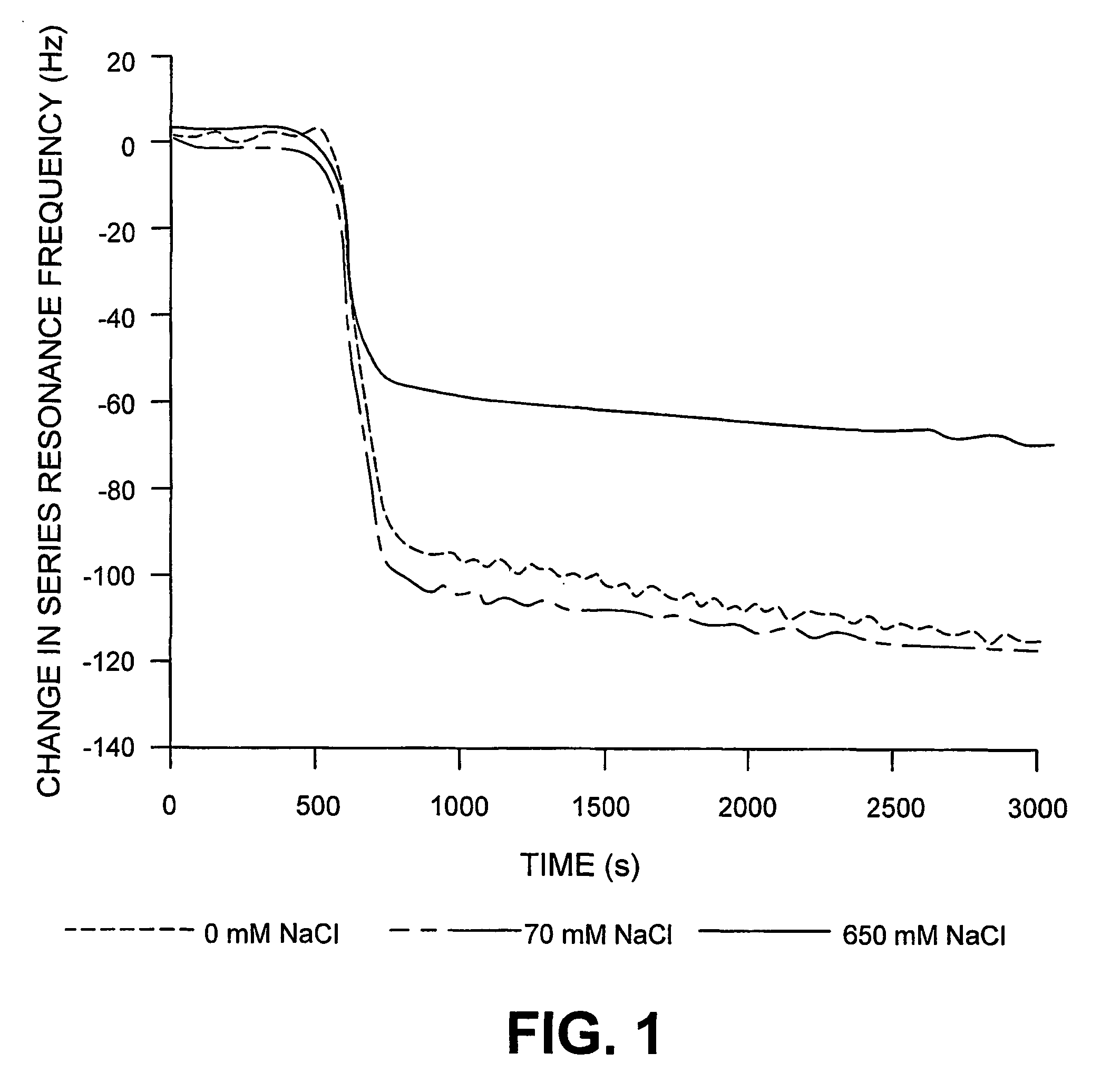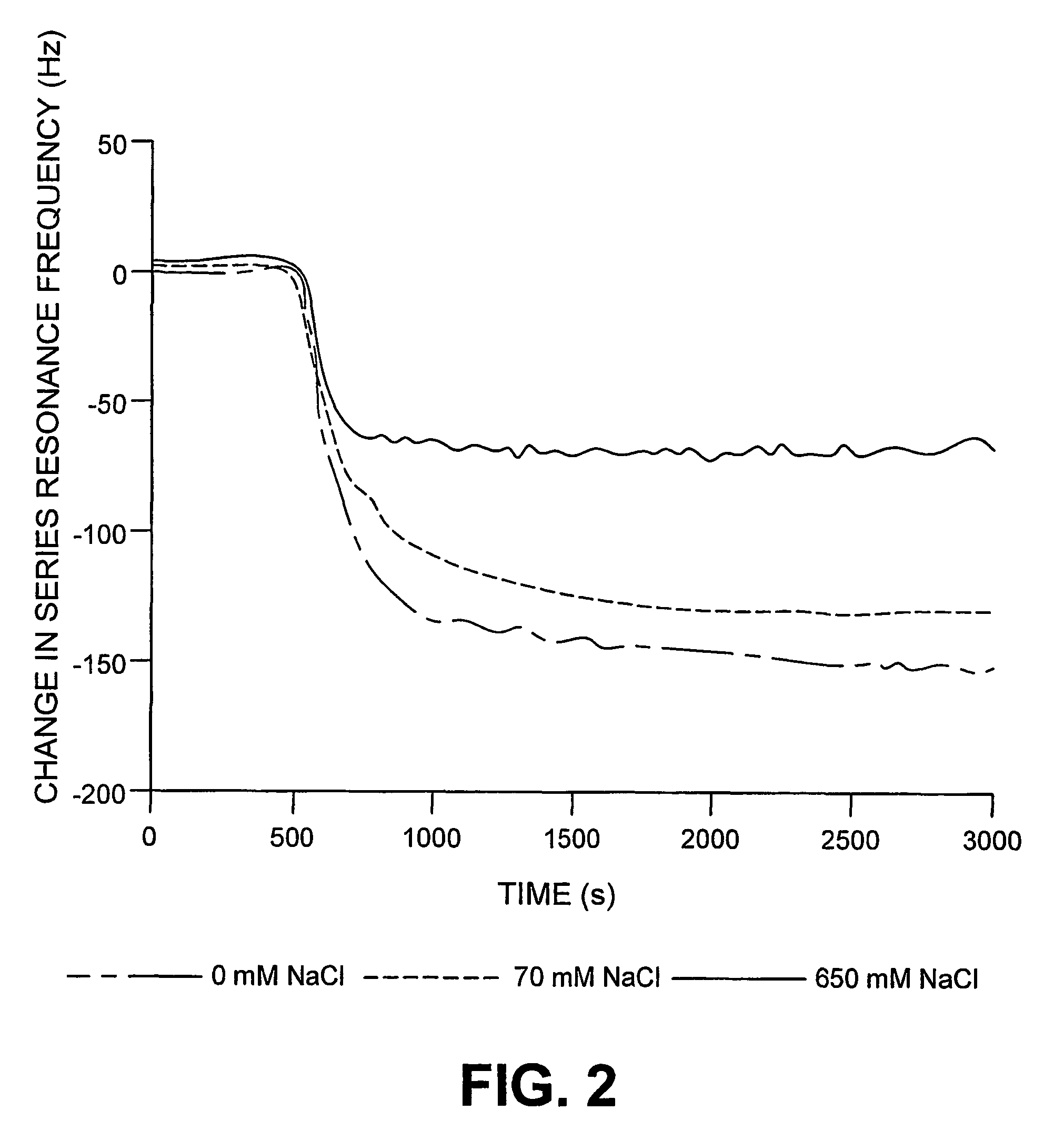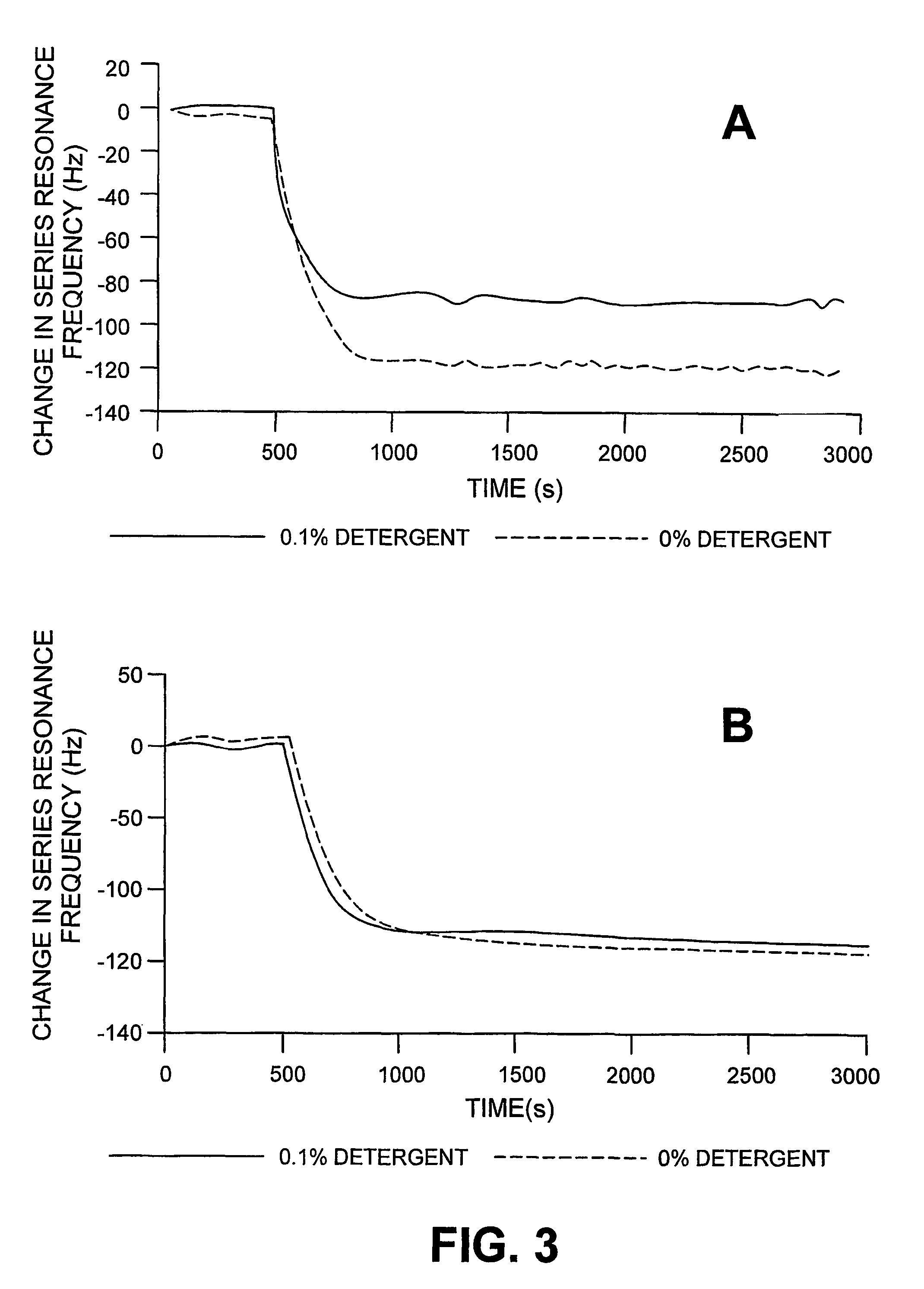Enzyme-based regeneration of surface-attached nucleic acids
a surface-attached nucleic acid and enzyme-based technology, applied in chemical libraries, combinational chemistry, sugar derivatives, etc., can solve the problems of high cost of microarray analysis of nucleic acids, high cost of microarray production and purchase, and failure of heating and chemical reagents in concurrent denaturation
- Summary
- Abstract
- Description
- Claims
- Application Information
AI Technical Summary
Benefits of technology
Problems solved by technology
Method used
Image
Examples
example 1
[0072]A first oligonucleotide F1 to serve as the probe strand, and a second oligonucleotide F2 complementary thereto, to serve as the test strand, of the following sequences, were synthesized, on an Applied Biosystems 392 DNA / RNA Synthesizer, and purified with cartridges and protocol purchased from Applied Biosystems, Mississauga, ON, Canada:
[0073]
F1:5′-biotin-TATAAAAAGAGAGAGAGATCGAGTC-3′SEQ ID NO:1F2:5′-GACTCGATCTGTCTCTCTTTTTATA-3′SEQ ID NO:2
[0074]Oligonucleotide probes having the sequence F1 according to SEQ ID No. 1 were immobilized by bonding, via the 5′ end, to the surface of piezoelectric, optically polished, 9 MHz AT cut quartz crystals, with gold electrodes (International Crystal Manufacturing, Oklahoma City, Okla., USA). The crystals were treated with neutravidin (ImmunePure™ neutravidin, used as received, from Chromatographic Specialities, Brockville, Ont., Canada, 500 μL volume of a 1 mg / mL solution). The quartz crystal assembly was mounted in a flow cell of the type desc...
example 2
[0077]A fluorophore-labelled oligonucleotide probe is covalently attached at the 5′ end to a silanized glass slides via a disulfide linkage. The slide is subjected to hybridization with a labelled nucleic acid target strand radiochemically labelled with 32P. Once hybridizaion has occurred, it is confirmed by isotopic measurements. The microarray is then treated with λ-exonuclease to allow digestion of the hybridized probe-target duplex. The slide is washed and confirmation that the microarray has been regenerated is evaluated using 32P evaluation of the microarray.
example 3
[0078]Avidin is used widely in bioanalytical chemistry in order to immobilize biological species, such as nucleic acids, to substrates, through the strong bond it forms with the biotin moiety. It is common practice to synthesize DNA and RNA molecules with biotin placed at the 3′ or 5′ end of the nucleic acid chain. Avidin is a basic, homotetrameric glycoprotein having a total molecular mass of 67–68 kDa. The protein possesses a disulfide bond in each subunit and is expected to be adsorbed readily onto gold via a metal-sulfur interaction. Each subunit is capable of binding a biotin moiety with an affinity of 1015 M−1. Neutravidin does not contain a carbohydrate residue, has a molecular weight of 60 kDa and binds biotinylated species with approximately the same affinity as the parent avidin molecule.
[0079]Effect of Buffer on Avidin Adsorption. In order to ascertain the optimum conditions for the real-time measurement of biotinylated RNA-peptide interactions (next section) the flow-inj...
PUM
| Property | Measurement | Unit |
|---|---|---|
| Fraction | aaaaa | aaaaa |
| Fraction | aaaaa | aaaaa |
| Fraction | aaaaa | aaaaa |
Abstract
Description
Claims
Application Information
 Login to View More
Login to View More - R&D
- Intellectual Property
- Life Sciences
- Materials
- Tech Scout
- Unparalleled Data Quality
- Higher Quality Content
- 60% Fewer Hallucinations
Browse by: Latest US Patents, China's latest patents, Technical Efficacy Thesaurus, Application Domain, Technology Topic, Popular Technical Reports.
© 2025 PatSnap. All rights reserved.Legal|Privacy policy|Modern Slavery Act Transparency Statement|Sitemap|About US| Contact US: help@patsnap.com



